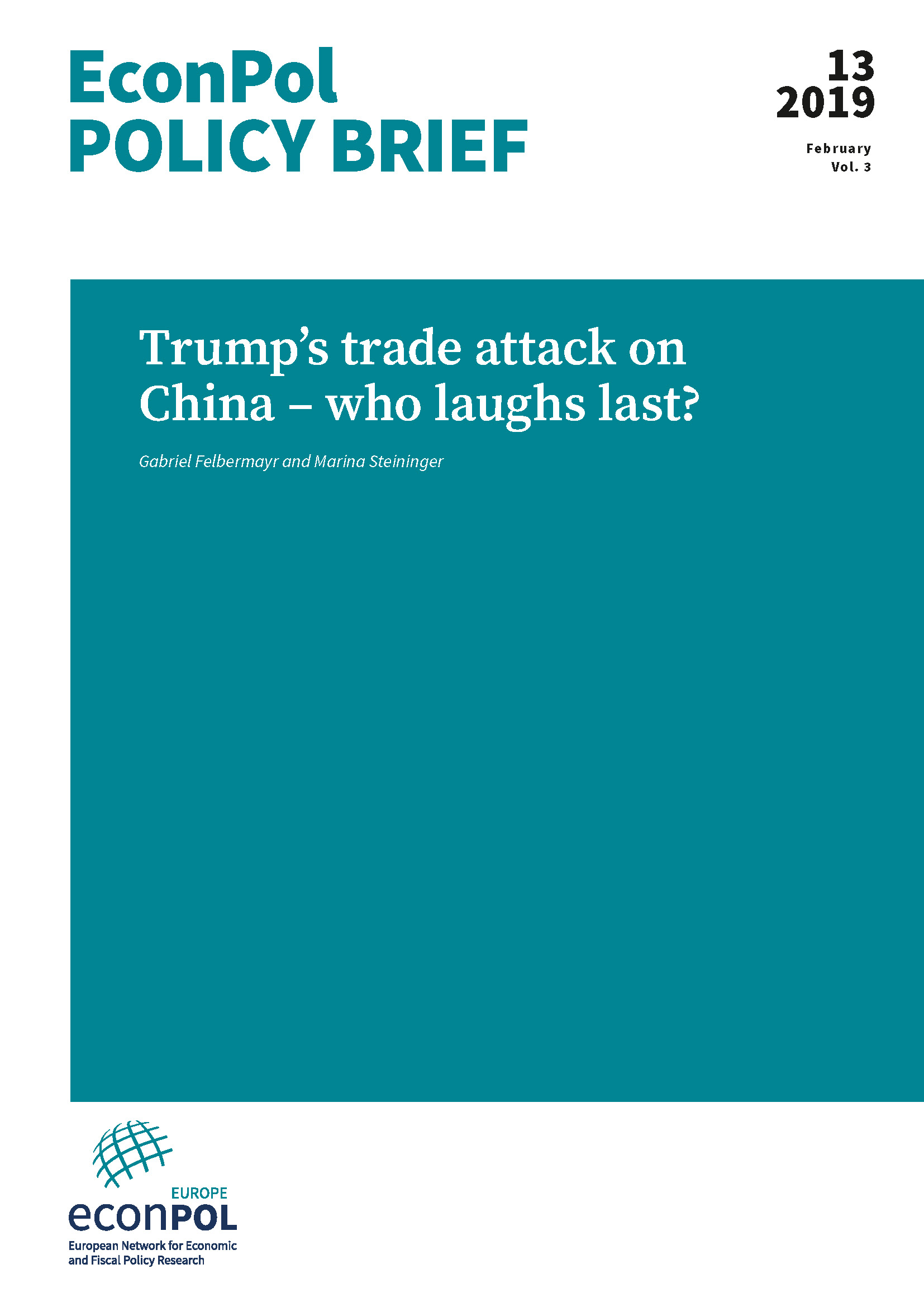Trump’s trade attack on China – who laughs last?
ifo Institute, Munich, 2019
EconPol Policy Brief 13

This policy brief uses a modern general equilibrium trade model to simulate the effects of the Chinese-American trade dispute. It finds that the tariffs and countertariffs implemented as of today cost the US €2.6 billion and China €5.7 billion of GDP.
Both economies lose, but China loses absolutely and relatively much more. Europe, in contrast, could register a GDP gain of €345 million. Chinese exports to the US go down by €52.1 billion, while US exports to China fall by €37.1 billion, so the US trade balance slightly improves.
A full-blown tariff war, where both parties tax all imports by additional 25%, would lower US GDP by € 9.5 billion and Chinese GDP by €30.4 billion. If the objective of President Trump is to use trade policy to increase the economic distance with China, an escalation helps.
Such a trade war would increase value added in the US manufacturing sector by 0.6% while the agri-food sector would shrink by 1.22%. In China, manufacturing would decline by 0.8%. Chinese exports to the US would fall by a whopping €171.3 billion, while US exports to China would contract by €51.0 billion. So, the bilateral trade balance of the US with China improves; however, with the EU it deteriorates. Hence, while Europe may benefit slightly from trade diversion effects, its trade surplus with the US becomes even larger – foreboding further transatlantic conflict.